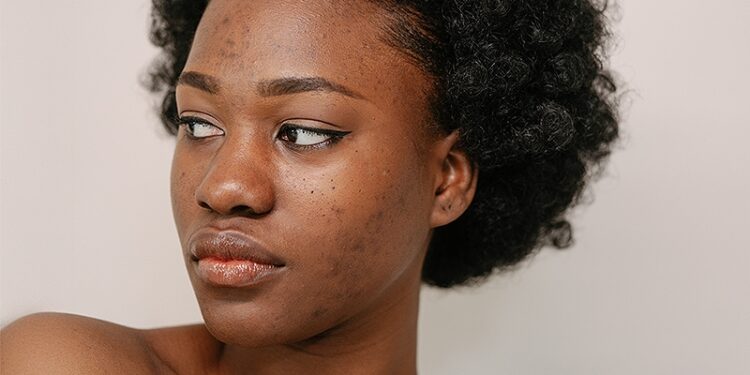SEATTLE — Management of acne in patients with darker skin types can differ significantly and should account for hair care routines and include earlier consideration of systemic treatment, according to Jenna Lester, MD, director of the Skin of Color Program and associate professor of dermatology at the University of California, San Francisco.
“We tend to think about what skin care products are being used when caring for patients with acne, and it’s less common to review their hair products,” Lester said at the Society for Pediatric Dermatology (SPD) 2025 Annual Meeting. “But hair products can play a significant role in contributing to acne among patients with skin of color, particularly those with Afro-textured or tightly coiled hair.”
Sebum doesn’t easily travel down the hair shaft because of the shape of the hair, and many people of color rely on oils, waxes, and pomades to maintain and style their hair. “Telling your patients to stop using oil as part of the conversation is not going to be helpful,” Lester said. “Skin health and hair health can sometimes be at odds with one another, but there are helpful ways to have this conversation.”
Shared decision-making is important, and dermatologists should be asking patients what products they use and discussing how exposure can be minimized, she said. “Rather than advising patients to stop using these culturally important products, clinicians should ask about hair care routines and recommend strategies such as using water-based formulations — often labeled as milk or lotion — or using oil prior to shampoo,” she explained.
Postinflammatory Hyperpigmentation (PIH)
An important issue in this population is the development of PIH, which is more common and can be more pronounced in individuals with darker skin tones because of the higher concentration of melanin. It is caused by increased production of pigment, which is subsequently transferred to keratinocytes. PIH can occur after inflammatory acne itself or treatment from cutaneous irritation.
PIH can be permanent and is difficult to treat topically. Epidermal hyperpigmentation often responds well to topical interventions, but dermal pigmentation is more resistant. “Prevention is key here,” Lester said.
However, Lester pointed out that the latest acne guidelines, issued in 2024 by the American Academy of Dermatology, do not adequately address PIH. She explained that the guidelines teach a linear progression of treatment, beginning with topicals and then moving to topicals plus antibiotics and progressing to isotretinoin. But the guidelines recommend that isotretinoin should be reserved for cases involving scarring or psychological distress, and do not mention patients of color, who may not have scarring but have hyperpigmentation. For these patients, “I have a lower threshold for moving to isotretinoin from topicals,” she said. “We should consider early initiation of isotretinoin in these patients and think about PIH as a scarring equivalent.”
Disparities and Bullying
Lester also pointed to disparities in acne care. A 2020 study published in JAMA Dermatology found that although Black patients with acne were more likely to be seen by a dermatologist than White patients and had a similar number of visits for acne, they generally received fewer prescriptions for acne medications.
“This is data from dermatologists prescribing these medications,” she said. “While I think it’s important to highlight this, and I have full confidence that everyone is trying to do their best, the best way to begin addressing the issue is to first recognize it.”
PIH needs to be treated as aggressively as acne, and she emphasized that PIH is often more concerning to patients than acne itself.
“My last pearl is to screen for bullying,” Lester said. “When reviewing the literature, I was struck by how many studies show that children from racial and ethnic minority groups are at a higher risk of bullying.”
She recommended screening patients for bullying by assessing its severity, frequency, and overall impact on the child’s health and well-being.
“I think this is an important moment, especially as we get people who treat visible disease and visible differences to assess for this,” Lester said. “Assessment of severity, frequency, and impact is incredibly important. Clinicians should also collaborate with the patient and parents to encourage communication with school and administrators and bring the primary care physician into the discussion.”
Lester reported having no relevant financial relationships.
Roxanne Nelson is a registered nurse and an award-winning medical writer who has written for many major news outlets and is a regular contributor to Medscape Medical News.
Source link : https://www.medscape.com/viewarticle/managing-acne-people-skin-color-key-considerations-2025a1000jur?src=rss
Author :
Publish date : 2025-07-28 11:36:00
Copyright for syndicated content belongs to the linked Source.











